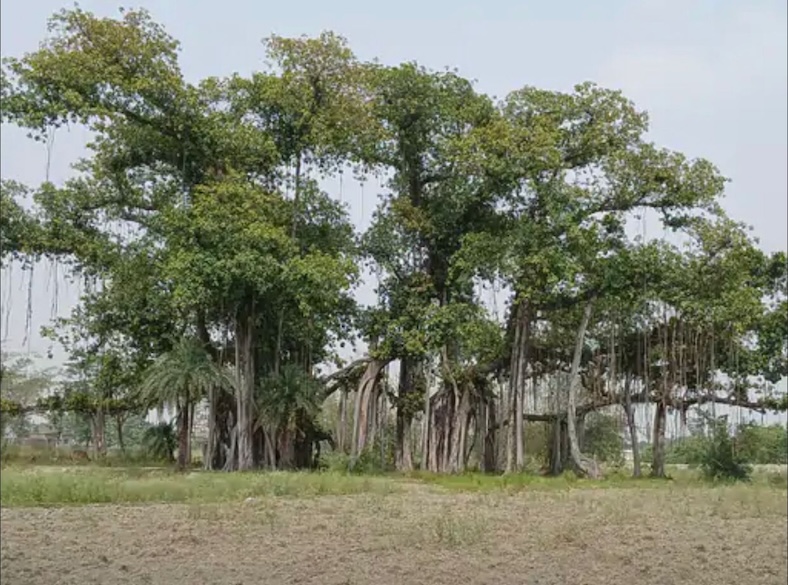Banyan Tree in Gopalganj Becomes a Natural Wonder, Transforming into a Mini-Forest

Gopalganj: Near the Sonasati Devi temple in Rajapatti, Vaikunthpur block of Gopalganj, a remarkable banyan tree has become the centre of attention. This single tree has astonishingly transformed into a forest, with its 200 sprawling branches creating a dense canopy. The tree’s origins trace back to the British colonial period, when indigo cultivation was prevalent in the region.
Local lore holds that the British, after establishing indigo plantations, planted this banyan tree, which has since expanded dramatically. In an era when global warming is a pressing concern, and environmental conservation is paramount, this tree stands as a natural marvel. It has effectively created a micro-forest with its vast network of trunks and roots.
Located about 60 kilometres from Gopalganj’s district headquarters, the banyan tree near the Sonasati Devi temple has outlived the British mansion that once stood nearby, serving as a historical marker and a natural air conditioner. Helen, the wife of a British indigo planter, is credited with preserving the tree to provide shade for local worshippers and workers. The temperature beneath this vast tree is reportedly 5 to 6 degrees Celsius cooler than its surroundings, offering a natural respite from the summer heat.
The tree’s intertwined branches and extensive root system give it the appearance of a forest. Environmental experts highlight the tree’s significant ecological benefits. The banyan tree absorbs approximately 50 kilograms of carbon dioxide daily, acting as a natural air purifier. According to a local environmentalist, banyan trees like this one play a crucial role in reducing atmospheric carbon and producing oxygen. Given the high carbon levels due to local factories, the tree helps improve the air quality significantly, with its vicinity showing much lower AQI levels.
Another environmentalist identifies the tree as Ficus religiosa, commonly known as Akshay Vat. Its extensive root system not only supports the tree’s massive structure but also enhances its carbon absorption capabilities, making it an effective natural solution for air purification. During extreme temperatures, the tree’s shade provides a much cooler environment, with temperatures under the canopy staying around 35 to 36 degrees Celsius compared to the 40 to 42 degrees Celsius outside.
Locals recall the tree’s long history, noting its presence even before his birth. Planted during the British era, the tree initially occupied an area of one bigha but has since seen its space encroached upon. Despite this, the tree continues to grow, with 100-150 trunks forming a dense forest-like area, especially lush during the rainy season.





